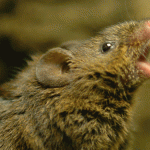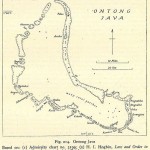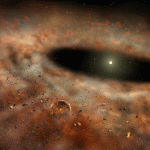
Image: Fred Bavendam/Minden Pictures
These arthropods are living fossils, practically unchanged in 445 million years. Born survivors, they have endured countless major changes on Earth, but we’re only just beginning to understand them.
Between late spring and midsummer at new and full moons, a tide of horseshoe crabs emerges from the waves to mate and lay eggs on land. The females carry the greater burden in this yearly ritual. Not only are they somewhat heavier than their mates, but after emerging from the surf, a male will fasten himself solidly to his bride’s back, where he will fertilise the eggs that she deposits in the sand. As many as six suitors also hoping to have access to her eggs surround each female. It’s an exhausting process, and it happens in incredible numbers. Once, over the course of a single night in 2008, volunteers and staff from the Nature Conservancy estimated that about 350,000 horseshoe crabs came ashore on the beaches of Delaware Bay, south of New Jersey in the US. The waters just off the coast of the bay may be home to as many as two million of these ancient animals.
Horseshoe crabs are one of nature’s greatest success stories. Hundreds of millions of years ago, horseshoe crabs developed into a prototype that, with very few modifications, has been viable ever since. The animal’s anatomy and way of living have made it so hardy that it has survived many violent changes on the planet, changes that led to the extermination of countless other species. The oldest known fossil of a horseshoe crab, found in Manitoba, is 445 million years old and is astonishingly similar to today’s specimens. Both ancient and contemporary horseshoe crabs have bodies with a combined head and thorax, known as a cephalothorax, covered with a hard, horseshoe-shaped carapace, or shield, an abdomen and a dagger-shaped tail.
Despite their long history on Earth, these animals have never been the kind of dominant species that takes over large areas. Their strategy is quiet endurance. Even when they were at their most diverse and populous during the Carboniferous period between 300 and 360 million years ago, there were only eight or nine known genera, and soon after, many of those went extinct amid massive changes in global climate, ocean chemistry and sea level. The horseshoe crab achieved something of a comeback during the Triassic period, when the first dinosaurs were establishing their dominance. Since then, palaeontologists have found only a few fossils in a limited number of locations, and they believe that horseshoe crabs during the past few million years have consisted of just a few species living in just a few areas in the world’s oceans. The horseshoe crab survived the ecological chaos of the mass extinctions 65 million years ago, an event that wiped out the dinosaurs and changed animal life on our planet forever. Four species remain: Today the American horseshoe crab lives in shallow water off the East Coast and the Yucatán Peninsula, and the other three species live in the waters of southern and eastern Asia.






